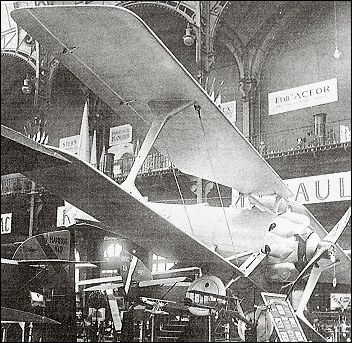|
| The H.31 was a participant in the 1923 competitive Cl
programme, which, calling for single-seat fighters in
the 400-500hp category, was most noteworthy for its
large number of contending designs. The H.31 was an
unstaggered single-bay biplane powered by a Salmson
18Cm 18-cylinder radial engine of 500hp and was of all-metal
construction apart from the wing ribs, armament
comprising four 7.7mm synchronised machine guns.
The fuselage was raised above the lower wing and the
centre section of the upper wing incorporated a fullchord
cut-out to improve pilot visibility. The engine
was close cowled, and to provide adequate cooling for
the rear cylinder row, the space between the lower
wing centre section and the fuselage was occupied by a
large radiator. The prototype H.31 was displayed at the
1924 Salon de l'Aeronautique, but did not commence its
flight test programme until the following year. Submitted
to the STAe for official evaluation, the H.31 was
one of the heaviest of the 12 contending prototypes and
proved inferior to all other competing types in both
level speed and climb rate, the winning contender being the Nieuport-Delage NiD 42 and the H.32 being abandoned.
 | A three-view drawing (1653 x 1203) |
| WEIGHTS |
| Take-off weight | 1789 kg | 3944 lb |
| Empty weight | 1287 kg | 2837 lb |
| DIMENSIONS |
| Wingspan | 12.00 m | 39 ft 4 in |
| Length | 7.58 m | 25 ft 10 in |
| Height | 3.62 m | 12 ft 11 in |
| Wing area | 34.00 m2 | 365.97 sq ft |
| PERFORMANCE |
| Max. speed | 260 km/h | 162 mph |
|
Do you have any comments?
|
| 
COMPANY
PROFILE
All the World's Rotorcraft
|







